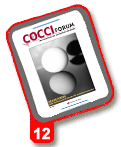Independent AnalysisDr. Marco Tamba finds that coccidiosis vaccination reduces need for treatment.By Marco Tamba, DVM, MPVM Istituto Zooprofilattico Sperimentale della Lombardia e Emilia Romagna Centro Emiliano Romagnolo di Epidemiologia Veterinaria BolognaVaccination of broilers against coccidiosis dramatically reduced the need for coccidiosis treatment, according to the results of an independent analysis conducted in Italy. The purpose of the analysis was to investigate current coccidiosis control programs in Italy from 2001 to 2004. The analysis was conducted by the Istituto Zooprofilattico Sperimentale della Lombardia e Emilia Romagna and encompassed over 840 million broilers, which represented 55% to 60% of Italian broiler production during the study period. For nearly 80% of the birds, mono or solitary programs rather than combination programs were used for coccidiosis control. The number of dual programs declined and mono programs increased during the study period because nicarbazin was banned by the EU in June 2002. From 2001 to 2004, the most popular mono control method was vaccination, which was used in over 45% of broilers during the study period. The next most popular mono control program was monensin, used in 19.1%, followed by salinomycin, used in 13.3%. Of the approximately 20% of broilers that received a dual coccidiosis control program from 2001 to 2004, the leading method used was nicarbazin plus narasin and monensin (8.6%), followed by nicarbazin plus monensin (4.2%).
By 2004, vaccination was used in over 54% of broilers. The next most often used mono coccidiosis control method in 2004 was monensin, used in 19.4%, followed by salinomycin, used in 19.2% (see Figure 1). A dual program consisting of nicarbazin, narasin plus monensin was used in only 6.8% of broilers. There are two commercial coccidiosis vaccines for broilers available in Europe. Of the two, Paracox-5 is the most widely used in Italy and was the vaccine administered to nearly 100% of vaccinated birds in the analysis. Paracox-5 is an attenuated vaccine that includes all precocious strains of Eimeria affecting broilers. The Eimeria strains in Paracox-5 are sensitive to all anticoccidials, including antibiotic ionophores.
Amprolium treatment declinedOne of the most significant findings in the analysis was that amprolium for treatment of coccidiosis declined dramatically when broilers were vaccinated for coccidiosis compared to use of amprolium when other anticoccidials were used. This finding indicates that vaccination is resulting in good coccidiosis control.
Figure 2 shows an example of one Italian producer’s preventive program where amprolium was administered to control clinical coccidiosis and amoxicillin was used to treat necrotic enteritis. Use of amprolium is a good indicator of clinical coccidiosis occurrence: Every peak in amprolium use due to anticoccidial resistance is followed by a change in the control program, then the use of amprolium decreases until there is an increase in new resistance. After vaccination was implemented in September 2003, there was a dramatic drop in the use of amprolium, which is evident in the graph. In contrast, the use of amoxicillin administered for treatment of necrotic enteritis progressively increased throughout the study period. Certainly, problems with bacterial enteritis still exist when broilers are vaccinated for coccidiosis control, but this clinical problem does not appear directly linked to the vaccination. Source: CocciForum Issue No.12, Schering-Plough Animal Health. |







 © 2000 - 2021. Global Ag MediaNinguna parte de este sitio puede ser reproducida sin previa autorización.
© 2000 - 2021. Global Ag MediaNinguna parte de este sitio puede ser reproducida sin previa autorización.